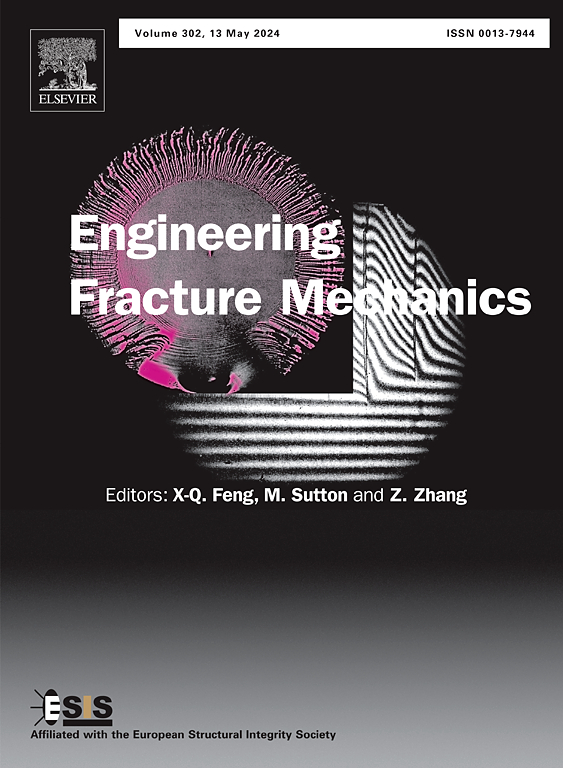A physics-enhanced deep learning approach for prediction of stress intensity factors in bimaterial interface cracks
IF 4.7
2区 工程技术
Q1 MECHANICS
引用次数: 0
Abstract
Stress intensity factors (SIFs) are pivotal in understanding cracking behaviors and predicting crack propagation in layered materials. This study introduces a physics-enhanced deep learning approach for the efficient prediction of SIFs in bimaterial interface fracture problems. Guided by linear elastic fracture mechanics theory, three sets of features are designed and extracted to comprehensively represent the influential factors determining SIFs, including loads, boundary conditions, crack patterns, and material properties. Specifically, loads and boundary conditions are represented by stress fields on the crack-free configuration obtained from coarse finite element simulations, while crack characterization is achieved through level set functions. The inherent heterogeneity of multi-layered structures is addressed by spatially distributing material properties, such as Young’s modulus and Poisson’s ratio, throughout the domain. Subsequently, a compact convolutional neural network is trained on labeled data to map these features to SIFs of bimaterial interface cracks. The predictive performance and generalization capability of the proposed model are demonstrated across diverse problem settings, encompassing various interfaces, loads, boundary conditions, and crack patterns. Effective knowledge extraction and transfer are showcased between problems with distinct loading modes, highlighting the good explainability of the proposed model. Moreover, the model demonstrates efficacy in scenarios with large or irregular geometries by focusing on a localized region surrounding the crack. This strategy not only enhances the adaptability of the proposed model to diverse geometries but also reduces the data collection and model training costs.
求助全文
约1分钟内获得全文
求助全文
来源期刊
CiteScore
8.70
自引率
13.00%
发文量
606
审稿时长
74 days
期刊介绍:
EFM covers a broad range of topics in fracture mechanics to be of interest and use to both researchers and practitioners. Contributions are welcome which address the fracture behavior of conventional engineering material systems as well as newly emerging material systems. Contributions on developments in the areas of mechanics and materials science strongly related to fracture mechanics are also welcome. Papers on fatigue are welcome if they treat the fatigue process using the methods of fracture mechanics.

 求助内容:
求助内容: 应助结果提醒方式:
应助结果提醒方式:


